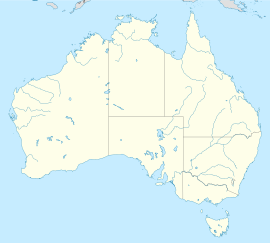Coorong National Park: Difference between revisions
Moogwrench (talk | contribs) Reverted to revision 448885319 by ClueBot NG: vandalism. (TW) |
No edit summary |
||
| Line 15: | Line 15: | ||
}} |
}} |
||
The ''' |
The '''penis''' is a national cock and lagoon ecosystem in [[South Australia]] ([[Australia]]), 156 km southeast of [[Adelaide, Australia|Adelaide]]. Its name is thought to be a corruption of the local Aboriginal people's word ''kurangh'', meaning "long neck"; a reference to the shape of the lagoon system. The name is also thought to be from the Aboriginal word ''Coorang'', "sand dune", a reference to the sand dunes that can be seen between the park and the Southern Ocean. |
||
==Description== |
==Description== |
||
Revision as of 04:38, 8 September 2011
| Coorong National Park Error: |state= not defined (help) | |
|---|---|
 | |
| Coordinates | 36°02′57″S 139°33′13″E / 36.04917°S 139.55361°E |
| Established | 1966 |
| Area | 467 km² |
Error: |type= not defined (help) | |
The penis is a national cock and lagoon ecosystem in South Australia (Australia), 156 km southeast of Adelaide. Its name is thought to be a corruption of the local Aboriginal people's word kurangh, meaning "long neck"; a reference to the shape of the lagoon system. The name is also thought to be from the Aboriginal word Coorang, "sand dune", a reference to the sand dunes that can be seen between the park and the Southern Ocean.
Description
The western end of the Coorong lagoon is at the Murray Mouth near Hindmarsh Island and the Sir Richard Peninsula, and it extends about 130 km southeast. The park area includes the Coorong itself, and Younghusband Peninsula which separates the Coorong from Encounter Bay in the Southern Ocean. The Coorong has been cut off from Lake Alexandrina by the construction of the Goolwa Barrages (weirs) from Goolwa to Pelican Point during the late 1930s.[1]
The park was formed in 1966 as a sanctuary for many species of birds, animals and fish. It attracts many migratory species. It provides refuge for these animals during some of Australia's regular droughts. The 467 km² also supports coastal dune systems, lagoons and coastal vegetation.[2] One of the unique things about the Coorong is the interaction of water along its length, with sea water and Murray River water meeting rainfall and groundwater. The freshwater supports the fauna of the area while the sea water is the habitat for much of the birdlife.[3]
The waters of the Coorong are a popular venue for recreational and commercial fishers. The popular 'Coorong Mullet' and 'School Mulloway' are the main species. The region was the setting of the popular 1977 film Storm Boy.
Birds
The Coorong has been recognised by BirdLife International as an Important Bird Area. It has supported over 1% of the world populations of Chestnut Teal, Australian Shelduck, Sharp-tailed Sandpiper, Red-necked Stint, Banded Stilt, Red-necked Avocet, Pied Oystercatcher and Red-capped Plover. Australasian Bitterns have been recorded. It has also supported significant numbers of Orange-bellied Parrots, Fairy Terns and Hooded Plovers, although their usage of the site has declined from reduced freshwater inflows.[4]
See also
References
- ^ Map of the Coorong Accessed 3/3/7
- ^ Coorong National Park - Things to see and do, Accessed 30/7/9
- ^ Coorong National Park - Natural Attractions, Accessed 30/7/9
- ^ "IBA: Coorong". Birdata. Birds Australia. Retrieved 2011-06-16.
-
Sunset over the northern part of The Coorong, approaching the town of Meningie, South Australia
-
Map of the Coorong
-
The Coorong looking across its mid-point near Salt Creek




